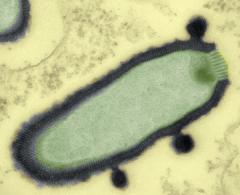
This Article From Issue
May-June 2014
Volume 102, Number 3
Page 232
DOI: 10.1511/2014.108.232
PLASTIC AHOY! Investigating the Great Pacific Garbage Patch. Patricia Newman. 48 pp. Millbrook Press, 2014. $30.60.
Here’s a pop quiz for the school-age scientists in your life. What substance exists in innumerable shapes and colors, takes thousands of years to break down, and interferes with the links of the ocean food chain? You may be drinking out of it right now: plastic!

Annie Crawley, DiveIntoYourImagination.com
There are millions, and maybe billions, of confetti-like pieces of plastic floating on and just under the surface of the Pacific Ocean within a great circle of currents called the North Pacific Gyre. Patricia Newman’s book Plastic Ahoy! Investigating the Great Pacific Garbage Patch invites young readers (grades two through six, roughly) along on a three-week voyage to study this strange phenomenon. The story follows a trio of scientists—Miriam Goldstein, Chelsea Rochman, and Darcy Taniguchi—in their work as part of the Scripps Environmental Accumulation of Plastic Expedition, or SEAPLEX.
Plastic Ahoy! gives a lively account of the daily routines of researchers at sea and also includes remarkable, shocking photography by Annie Crawley that clearly illustrates how the human environmental footprint can reach far, far offshore. The SEAPLEX scientists tackle questions such as, Do barnacles live on floating plastic? and What happens when sea creatures eat the plastic? While supplying answers, the three also share their research on phytoplankton, zooplankton, fish, and many other organisms, as well as on the chemical properties of plastic and its effect on sea life and water quality.
Newman makes all of this information readily understandable for young readers. She also drives home the notion that science is exciting and relevant, as she builds a strong case for cleaning up water ecosystems and getting personally invested in ecological responsibility. Bonus sections include action items for individuals and groups, ways to reduce one’s environmental footprint, a beginner’s glossary of marine biology, and a list of books and websites for students who want to explore further.
Katie-Leigh Corder is the Web managing editor for American Scientist, where she also manages social media and multimedia production. Previously, she was a student services contractor in communications for the Environmental Protection Agency.

American Scientist Comments and Discussion
To discuss our articles or comment on them, please share them and tag American Scientist on social media platforms. Here are links to our profiles on Twitter, Facebook, and LinkedIn.
If we re-share your post, we will moderate comments/discussion following our comments policy.